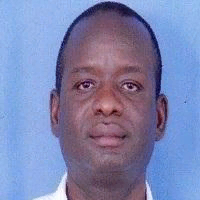
Christopher Bombie Ninfaakang
Work place: University of Energy and Natural Resources, Sunyani, Ghana
E-mail: christopher.ninfaakang@uenr.edu.gh
Website:
Research Interests: Image Processing, Artificial Intelligence, Graph and Image Processing, Data Structures and Algorithms
Biography
Mr. Christopher Bombie Ninfaakang is a PhD. candidate in Computer Science at KNUST and a Lecturer in the Department of Computer Science and Informatics, UENR. He holds a BSc. Computer Science from the University of Ghana and Master of Science in Computer Science at the University of Mysore, India. His research interest includes image processing, artificial intelligence and big data analytics.
Author Articles
A Digital Image Watermarking Using Dwt and L-shaped Tromino Fractal Encryption
By Nicodemus Songose Awarayi ObedAppiah Benjamin Asubam Weyori Christopher Bombie Ninfaakang
DOI: https://doi.org/10.5815/ijigsp.2021.03.03, Pub. Date: 8 Jun. 2021
This paper presents a digital image watermarking scheme in the frequency domain for colour images. The algorithm was developed using the digital wavelet transform together with fractal encryption. A host image was first transformed into a frequency domain using the discrete wavelet transform after which a binary watermark was permuted and encrypted with a fractal generated from the watermark and a random key. The encrypted watermark is then embedded into the host image in the frequency domain to form a watermarked image. The algorithm’s performance was examined based on the image quality of the watermarked image using peak signal to noise ratio. A perceptual metrics called the structural similarity index metric was further used to examine the structural similarity of the watermarked image and the extracted watermark. Again, the normalised cross-correlation was introduced to further assess the robustness of the algorithm. Our algorithm produced a peak signal to noise ratio of 51.1382dB and a structural similarity index of 0.9999 when tested on colour images of Lena, baboon and pepper indicating the quality of the watermarked images produced and hence indicates a higher imperceptibility of the proposed algorithm. The extracted watermark also had a structural similarity of 1 and a normalised cross correlation of 1 indicating a perfect similarity between the original watermark and the extracted watermark hence shows a higher performance of the proposed algorithm. The algorithm also showed a very good level of robustness when various attacks such as Gaussian noise, Poisson noise, salt and pepper noise, speckle noise and filtering were applied.
[...] Read more.Other Articles
Subscribe to receive issue release notifications and newsletters from MECS Press journals